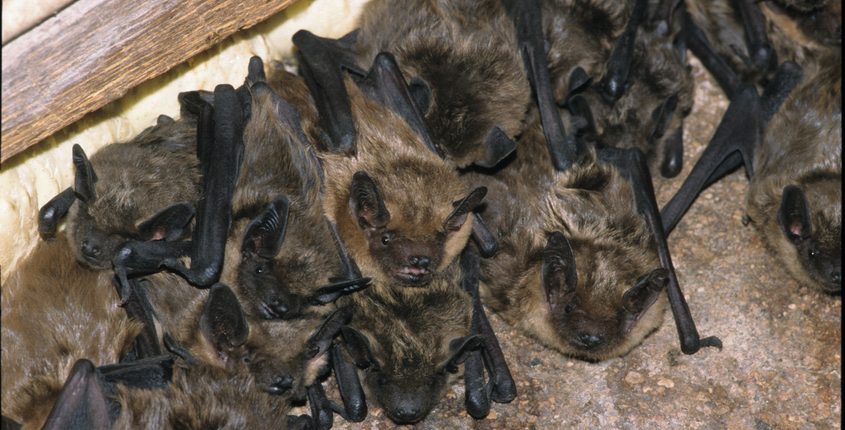WHY BAT INFESTATIONS CONTINUE IN OHIO, EVEN AS POPULATIONS DIE OFF
Over the past decade, the bat population in the United States has faced severe threats from disease In the Ohio area, the number of bats has dropped quickly. You might expect that these changes mean you’re less likely to find bats in your attic or porch. In my work as a wildlife removal expert, however, I haven’t noticed any decline in bat infestations in man-made structures. How are these environmental changes really affecting homeowners?
Why is the Ohio bat population changing?
First, some quick background. The Ohio bat population today is very different from what it was only 10 years ago. In 2006, White Nose Syndrome appeared in New York and quickly spread throughout the country.
White Nose Syndrome is a fungal disease that thrives in cold environments. It can spread very quickly within a hibernating colony, when bats are close together in cold caves. When WNS affects a cave, it often kills 70-100% of the bats.
The National Park Service and conservation groups have taken steps to slow the spread of the disease and prevent caves from being infected. Some areas, like the popular Ice Box Cave in Cuyahoga Valley National Park, have been closed to visitors to prevent infection. However, there is no treatment for the disease itself, and experts fear it may cause extinction of some local species. As a result, bats now receive increased legal protections.
Most species of bat found in Ohio are considered a “species of concern” or “species of special interest” by the Ohio Department of Natural Resources, so they receive some basic protections.
As the bat population declines, more federal and state rules have been put into place. No matter what species you’re dealing with, this is the bottom line: Bat colonies must be humanely removed, not exterminated, and maternity colonies require extra care.
Colonial species of bats form close groups to hunt and hibernate together. Most of the year, these are mixed colonies that contain both males and females and sometimes include multiple species. In spring, however, most Ohio bats form a different kind of colony. Pregnant female bats will gather together in maternity colonies to share resources and body heat. Trying to remove these colonies is risky. It can lead to additional damage to the structure, health risks, and danger to the bat population. Right now, exclusion of bats is restricted in the summer months.
While White Nose Syndrome has significantly decreased the total bat population in Ohio, bat infestations in buildings remain common.
The vast majority of bats found in Ohio buildings are Little Brown Bats, which prefer to roost in large groups. They naturally prefer caves, tree hollows, and other enclosed spaces. However, WNS has made large colonies very vulnerable since the disease spreads quickly.
Many bats have been forced to form smaller colonies and stay farther apart from other groups. The bats that stay safe from disease seek out man-made structures rather than caves or natural shelters. In some species, bats have come to prefer man-made shelter.
Even with changes to the environment and wider bat population, Ohio bats continue to seek out attics and porches for shelter. This isn’t likely to change anytime soon, so homeowners still need to be aware of potential vulnerabilities in their houses. Scheduling a preventative inspection is the best way to protect yourself from a future bat infestation.
Questions about bat removal in ohio? Need to schedule an inspection? Get in touch with us at 440-236-8114.





